Schism and Siege to the Present Day
The Church of Egypt, the Coptic Church, was centered, as mentioned, in the most important city of the East, Alexandria. This Church did not accept the Council of Chalcedon for several reasons.
One motive was that Chalcedon decreed that henceforward Constantinople was to have second rank in the Empire, after Rome, since "Constantinople was the new Rome," as the second Council of Nicea put it. Since 381, this ranking was only a matter of honor; now, it was a new norm of authority. Naturally, this new norm did not go over well with Alexandria, which had always been the largest and the most important diocese in the East. Rome didn't accept Chalcedon entirely either, precisely for this reason.
The Council also deposed the Patriarch of Alexandria, Dioscoros; for one thing, he actually believed in the separation of Church and State. While Americans would applaud this viewpoint, the Byzantine Emperor, Marcian, did not appreciate it. After Chalcedon, the emperor regularly appointed his own patriarch in Egypt, in opposition to the traditional Coptic patriarch.
As a result of Chalcedon, people accused the Church of Egypt of Monophysitism, a heresy about the nature of Jesus Christ. However, the Church of Egypt always denied this charge and said it followed the teaching of St. Cyril of Alexandria. (For some years, in agreement, the Church of Rome has considered the Coptic Church authentically Orthodox, in no way heretical.)
Especially in the fifth and sixth centuries, the emperors of the Eastern Roman Empire tried to make the Coptic Church go along with Chalcedon. The police and the army did their worst. Resistance was persistent, strong, and widespread, in spite of political coercion from the government. Those Copts who accepted Chalcedon eventually adopted the rite of Constantinople, the Byzantine Rite. They were called "Melkites," that is, the "King's men." (Malik is a common name for people in the Middle East; it is MLK in Hebrew and Aramaic, the word for "king.") Most Egyptians, however, remained loyal to the Coptic Church and the Coptic Patriarch of Alexandria.
In 646, the Arabs conquered Egypt and took over. Ever since, there has been discrimination and, at times, severe persecution. In the eighth century, Christians had the cross branded in their hands. They had to wear five-pound crosses, for identification. Churches were closed and burned. However, the Coptic Church persevered. As recently as the twentieth century, the Christian population of Egypt was as high as 40% of the general population. Substantial Arab immigration and Muslim radicalism have now made things difficult for the Christians, who live as a second-class group of citizens, faced with hostility and inequality. Every new Christian church, for example, can be built only with the personal approval of President Mubarek. The previous president had the Patriarch of Alexandria kept under house arrest. Now and again, an incendiary bomb is thrown into the front window of a store owned by a Christian. It is also against the law for a Muslim to work under the authority of a Christian, in any business or comparable establishment. Because of discrimination, the ancient Jewish community in Alexandria, perhaps 2500 years old, is now near extinction; almost all the Jews have left the country. It is just as difficult for the Christians.
As things stand, the Coptic Church is divided into two groups. The first, the ancient Coptic Orthodox Church, recognizes the Patriarch of Alexandria as its leader. He is called the "Pope," just as we call our patriarch by the same affectionate title. His name is Pope Tawadros II. Although he is indeed the Patriarch of Alexandria, he lives in Cairo, today a much bigger city.
Estimates on the number of Copts vary. As of 1997, the Oxford Dictionary of the Christian Church says they total only four million people; there is strong evidence that this officially reported figure is underestimated. (See Ronald Roberson, The Eastern Christian Churches, p. 28.) In 1995, Pope Shenouda said there were eight million faithful. In 1997, there were said to be eight to ten million. (See Klaus Augustin, Die Ostkirchen, p. 78.) Today, some say there are as many as fourteen million Coptic Orthodox.
In any case, they are the dominant Christian group in Egypt, going back to apostolic times. In general, these people are often called "Oriental Orthodox," to distinguish them from the Orthodox who accepted Chalcedon, who are in communion with the bishop of Constantinople, the Byzantine Christians. But the Copts themselves just say they are "Orthodox."
Because the Coptic Church did not accept the Council of Chalcedon, as mentioned, the Orthodox Church of Constantinople gradually separated from the Coptic Church and fell out of communion. Some of the Copts who remained in communion with the Emperor and the Patriarch of Constantinople, the Melkites, today also call themselves "Orthodox."
To compound the situation further, there is a second group of Copts: the Catholics. They represent only a small percentage of the Christian Coptic community. The Oxford Dictionary says they number 105,000. Augustin says they are 180,000. Roberson quotes a total of 197,000. Another source gives a figure of 210,000. Again, such figures may be too low. These Catholics are fully in communion with Rome, with their own Patriarch of Alexandria. Ultimately, the destiny of these Catholic Copts is to be reconciled with Pope Tawadros II and to be part of his jurisdiction.



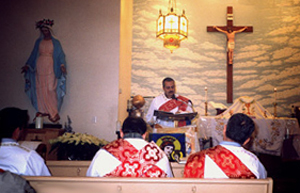
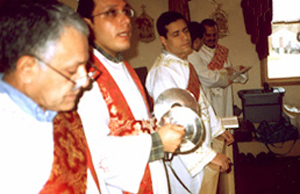
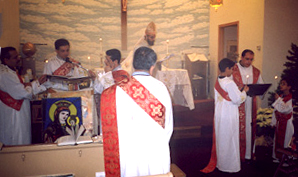
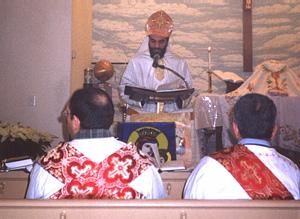
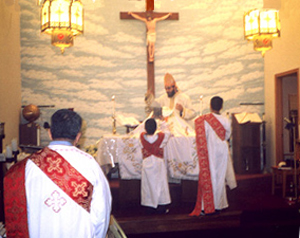
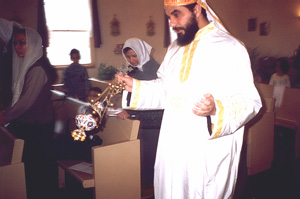
 top
top